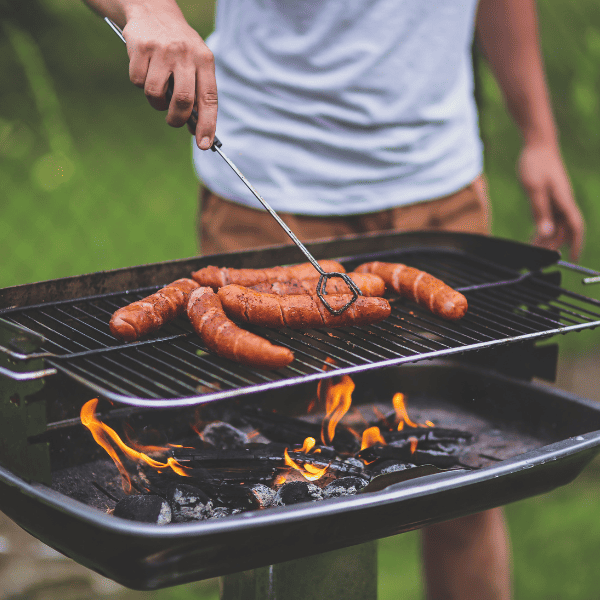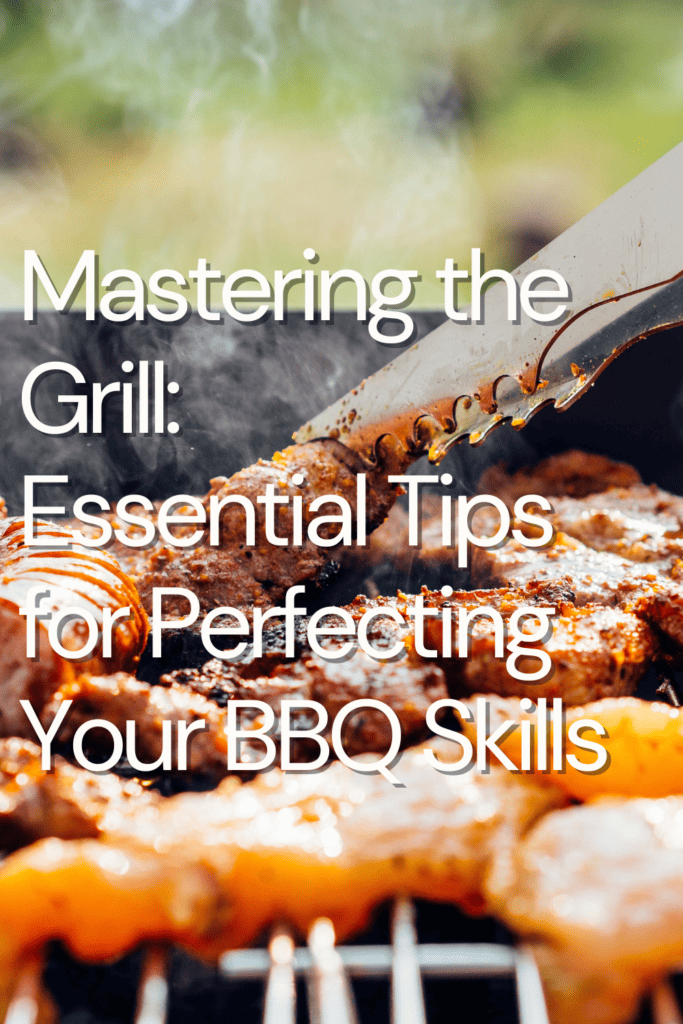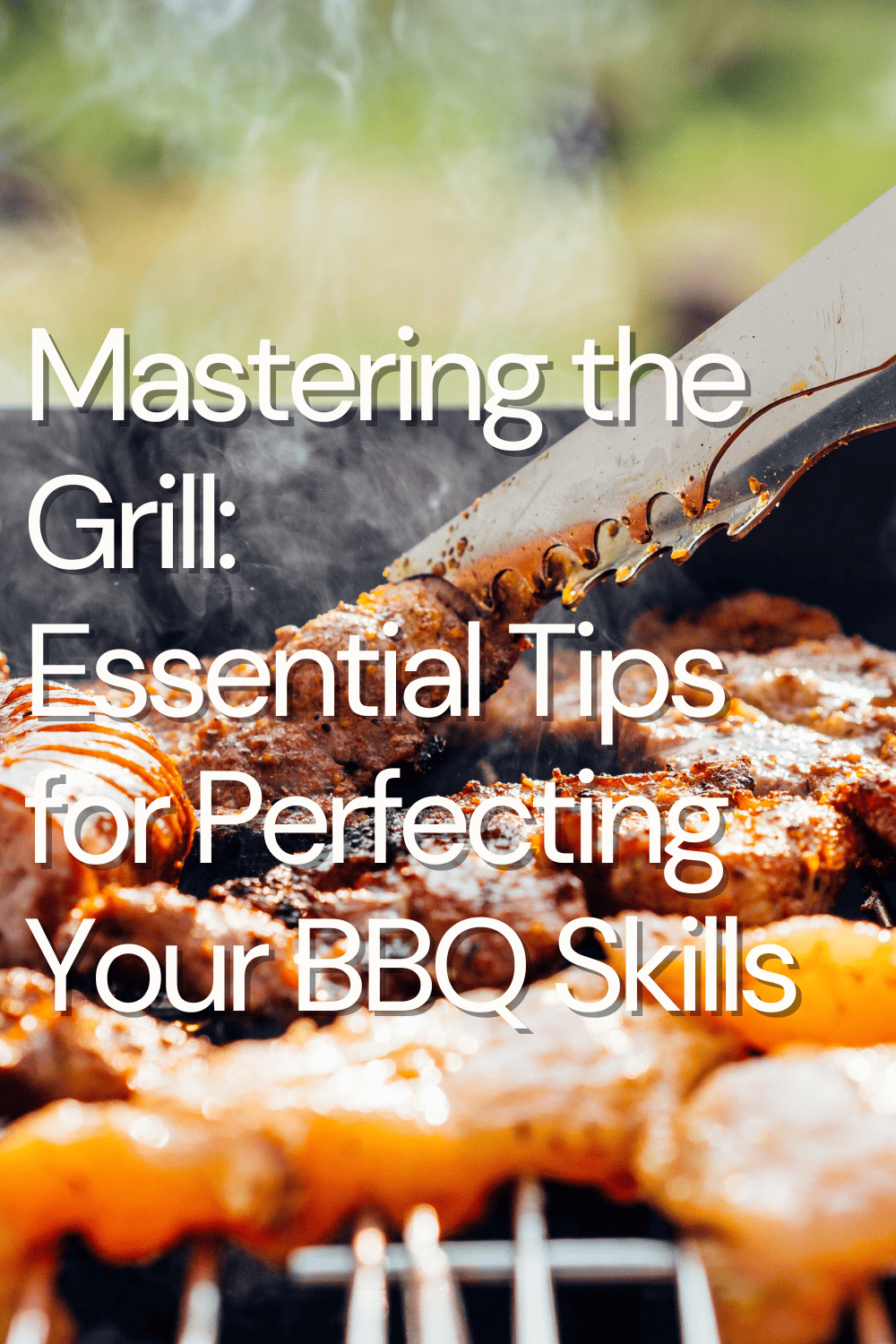Mastering the Grill: Essential Tips for Perfecting Your BBQ Skills
This post may contain affiliate links which might earn us money. Please read my Disclosure and Privacy policies hereWith the summer season in full swing, there's nothing more appealing than the aroma of sizzling meat on the grill. Barbecuing is a beloved cooking method that turns a simple backyard meal into a fun-filled feast.
However, grilling is not just about flipping burgers; it's an art that requires specific skills to perfect.

Know Your Grill: The Art of Understanding Your Barbecuing Beast
Just like an artist knows every brush and color in their palette, a grill master should understand every knob, rack, and feature of their grill.
Before you even consider tossing a juicy steak onto the grates, take a moment to appreciate the fundamentals of the device that transforms raw ingredients into smoky, flavorful delights.
The right knowledge will empower you to manage heat efficiently, handle different types of food, and ultimately, grill to perfection.
Types of Grills: Choosing Your Flame
While grills all share the same fundamental purpose of cooking food over direct heat, their design, fuel source, and resulting flavors can vary significantly. Here's a closer look at the main types of grills:
- Charcoal Grills: The traditionalist's choice, charcoal grills are favored by many for their ability to impart a robust, smoky flavor that's often associated with classic barbecued food.
Charcoal grills use either lump charcoal or charcoal briquettes as fuel, and their heat output can be adjusted by spreading the coals for intense heat or banking them to the side for indirect cooking.
Although they might require a bit more effort to start and manage, the flavor payoff is often worth it.
- Gas Grills: If convenience and control are top priorities, a gas grill—powered by either propane or natural gas—might be your best bet.
Gas grills offer quick start-up, precise temperature control, and easy cleanup, making them popular for weeknight dinners or large parties. While they might lack the smoky depth of a charcoal grill, they more than makeup for it with their ease of use.
- Pellet Grills: Pellet grills offer a modern twist on the age-old practice of cooking over wood. Powered by hardwood pellets and an electric heating element, pellet grills are known for their versatility and convenience.
They allow you to smoke, grill, and even bake on your grill, all while imparting a wood-fired flavor. Many pellet grills come with digital controls for easy temperature management, making them a tech-friendly option for the outdoor cook.
Heat Management: Taming the Beast
One of the fundamental skills in grilling is managing the heat. The right temperature can mean the difference between a perfectly seared steak and an overcooked piece of leather. Here are two key strategies for mastering heat management:
- Understanding Hot and Cool Zones: Professional grillers know the importance of creating “zones” on their grill. Hot zones are areas with direct heat, ideal for searing and browning, while cool zones offer indirect heat, perfect for slower cooking or warming already cooked food.
By moving food between these zones, you can achieve a perfect crust and a juicy interior, all while minimizing the risk of burning.
- Temperature Monitoring: Guessing is not a reliable strategy when it comes to grilling. Invest in a good-quality grill thermometer to accurately measure the heat of your grill and avoid undercooking or overcooking your food.
Furthermore, a meat thermometer can be used to ensure your meat has reached the safe and optimal internal temperature. This way, you won't have to cut into your food to see if it's done, which can cause precious juices to escape.
Prepping for the Grill: The Importance of Preparation
Preparing your food and grill in advance can significantly enhance your grilling experience and the flavor of your BBQ.
Food Preparation
Proper food preparation plays a key role in achieving delicious results:
Marination: Marinating meats not only adds flavor but also tenderizes. Plan ahead as some meats require several hours or even overnight marination for best results.
- Dry Rubs: Dry rubs are a mix of spices and herbs applied to the meat before grilling, imparting a flavorful crust. Experiment with different rubs to discover your personal favorite.
- Bring to Room Temperature: Before grilling, allow your meat to come to room temperature for even cooking.
Grill Preparation
Preparing your grill is as crucial as preparing your food:
- Clean Your Grill: Regularly clean your grill to prevent buildup, which can impact flavor and cause flare-ups.
- Preheat Your Grill: Preheat your grill 15-20 minutes before you start cooking to ensure it reaches the right temperature and kills any remaining bacteria.
- Oil the Grates: To prevent food from sticking, lightly oil the grill grates before starting your BBQ session.
Mastering Grilling Techniques: The Path to BBQ Brilliance
While grilling might seem straightforward on the surface, the nuances of technique can elevate your barbecuing from simply cooking outdoors to a culinary art form.
From managing the unpredictable dance of flame flare-ups to understanding the importance of resting your meat, these techniques can take your BBQ skills from novice to seasoned grill master.
Control Flare-Ups: Taming the Flame
Flare-ups – those sudden, dramatic bursts of flame that can char your food and singe your eyebrows – are a common challenge when grilling. However, with the right techniques, you can control and even prevent these fiery disturbances:
- Trim Excess Fat: Meat with a lot of fat can cause flare-ups as the fat drips onto the heat source and ignites. Trimming excess fat from your meat before grilling can significantly reduce the chances of flare-ups. But remember, a little fat is necessary for flavor and to prevent the meat from drying out.
- Keep the Lid On: If flare-ups do occur, don't panic. Simply put the lid on the grill. This cuts off the oxygen supply to the flames, quickly and safely snuffing them out. It's an easy and effective way to take control of the situation.
Rest Your Meat: Patience Makes Perfect
The concept of resting your meat may seem counterintuitive. After all, who wants to wait when faced with a perfectly grilled steak? But this step is crucial for achieving a juicy and flavorful result:
- The Science of Resting: When meat is cooked, the heat forces the juices toward the center. Resting allows these juices to redistribute throughout the meat. Cutting into the meat too soon can cause these flavorful juices to spill out, leaving your meat dry.
- How Long to Rest: As a general rule, rest your meat for about 5-10 minutes for every inch of thickness. For example, a 1-inch thick steak should rest for 10 minutes before slicing. Use this time to gather your guests, set the table, or prepare a side dish. When you finally cut into the meat, you'll find it's worth the wait.

Mastering the grill and perfecting your BBQ skills involves understanding your grill, proper preparation, and honing specific grilling techniques. By following these essential tips, you can elevate your BBQ game, impressing your family and friends with your newfound expertise. Practice makes perfect, so fire up that grill and enjoy the art of BBQ.







